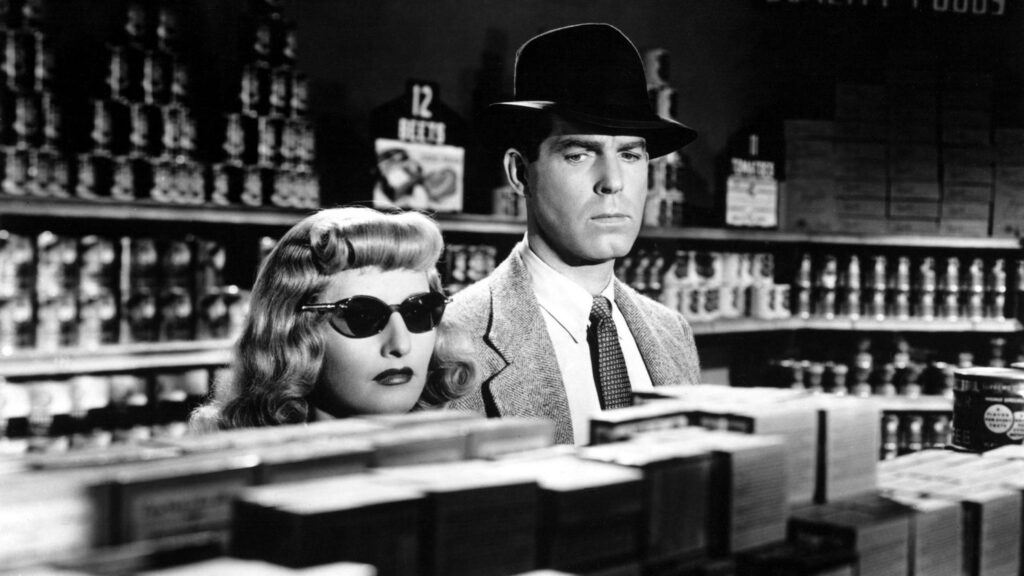
A masterpiece in film is both a document of a culture unique to the time of its conception as well as a technical feat that provides continuing instruction and inspiration for the generations that follow. The technical prowess of such a film is not limited to the technology of the cinema [cameras, lights, cranes, microphones etc.] but extends to its actors’ performances as well as the writing and directing of the feature. A masterpiece must be a watershed in all the before mentioned departments.
Billy Wilder’s film of James M. Cain’s novel of the same name, Double Indemnity (1944), has managed to accomplish a great deal in what, looking back some seventy years or so, may seem quite atypical for a genre picture. First, it marked the influx of expressionistic detective films later labeled Film Noir. Like his contemporaries migrating from Nazi Germany, Wilder choreographs his characters to drift in and out of the expressionist shadows at key emotional moments. At the end of the film, Wilder and cinematographer John Seitz stage Keyes’ entrance on the dying Walter Neff so that he comes into shadow and out of shadow, as if not only entering a room, but the psychological world Neff has been building around himself since he began recounting his story. Keyes’ motion out of light into dark and into light again also heightens the audience’s awareness of his presence as they are taunted with an image that just can’t stay seen, evoking a desperation similar to Neff’s. This ability to manipulate the audience’s investment in a film was wholly realized in Wilder’s use of Noir which in its moment was spectacularly original and compelling. Other German directors, Robert Siodmak being one of the best examples, invested similar character and shadow coordinations.
Double Indemnity’s screenplay puts it right in its time with the hard boiled dialogue one only finds in Cain, and it’s no surprise that this style was preserved by co-screenwriter Raymond Chandler. The stylization of the dialogue creates heightened character traits that would become staples of the Noir genre. Only tough guys like Neff say “baby” and only a femme fatale speaks with so much innuendo. In its moment, and even now, the style seems fresh because of the precision to its execution. The words seem penned to fit musical beats at the rate the witticisms and comebacks are thrown back and forth by the film’s characters.
Looking at Double Indemnity today, with so much cinema in between, you can begin to gauge Wilder’s influence with this film. John Boorman’s classic Point Blank (1967) has the same heightened stylized dialogue and use of flash backs [though with a decidedly LSD overtone] as Double Indemnity. Lee Marvin’s character in that film has a back story that could very well have been invented by Cain. Even R.W. Fassbinder quotes the film in his early Samuel Fuller/Jean-Luc Godard inspired gangster films starring Uli Lommel in the late sixties. The international film community has been barrowing from Wilder’s film for so long that one can barely recognize its influence anymore [even David Lynch choreographed the same aforementioned shadow play in his film Blue Velvet (1986) when Jeffrey Beaumont meets Sandy Williams].
